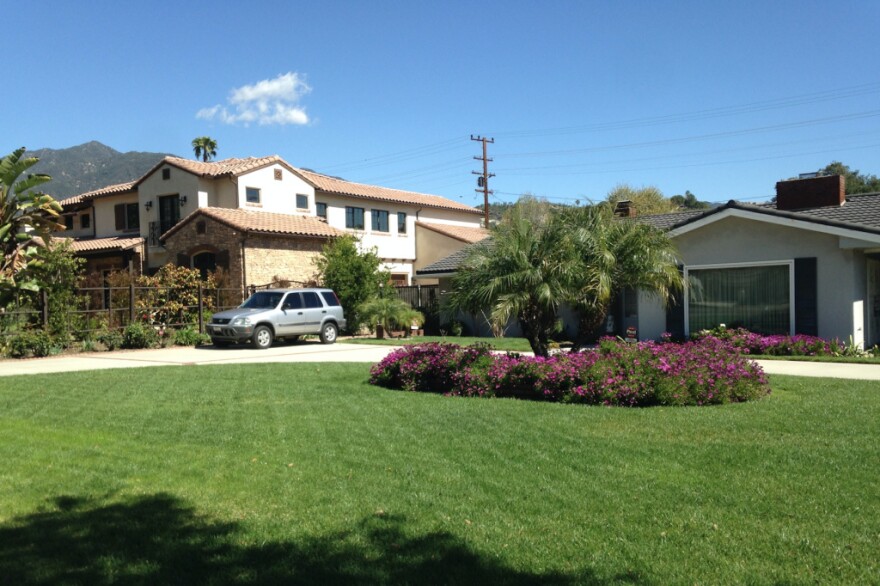With our free press under threat and federal funding for public media gone, your support matters more than ever. Help keep the LAist newsroom strong, become a monthly member or increase your support today.
Arcadia adopts new rules to regulate 'mansionization'

Arcadia officials have adopted new rules regulating the size of single-family homes in the city in response to growing anger over so-called "mansionization," the building of big homes where there once were smaller ones.
The City Council voted 5-0 Tuesday night to adopt an ordinance that sets limits on house sizes based on floor-area ratios.
“Floor-area ratio is a land use tool that measures the amount of construction based on the size of the lot," said Jason Kruckeberg, Arcadia's assistant city manager and development services director.
For example, a floor-area ratio of 50 percent would limit the size of a home on a 10,000-square foot lot to no more than 5,000 square feet.
The idea is to keep home sizes in proportion to their lot areas and prevent owners from building too close to the lot line, a common complaint from opponents of mansionization.
The ordinance also sets rules for hillside homes, and redefines some existing rules. Like rules that apply to side and backyards, for example: Each side of a home must have a side yard of at least 10 feet wide or 10 percent the width of the lot. Homes must also have rear yards of no less than 25 feet.
The new rules take effect May 2o. Home projects with design reviews approved before that date will be grandfathered in, Kruckeberg said.
Arcadia has seen many of its older, smaller ranch-style homes replaced with much larger ones as new residents move in. Some local residents view them as eyesores.
A group called Save the Arcadia Highlands had collected signatures in hopes of placing an anti-mansionization voter initiative on the November ballot. That effort recently hit a roadblock after the City Clerk's office found mistakes in the signature-gathering paperwork.
Others have defended the larger homes and their owners, saying the debate amounts to a culture clash as more Asian immigrants move into the city.
City Council member Sho Tay recently told KPCC that some of the new arrivals want more space so they can house extended family, like parents or in-laws.
"It's a lack of understanding," Tay told KPCC referring to opponents of the large homes. "I try to explain to people — you don’t want to kick them out your house and send them to an old folks' home.”
The city's population is about 60 percent Asian, according to the 2010 Census.
Anti-mansionization activists will likely have more allies on the City Council. One of the ballot initiative's main proponents, attorney April Verlato, was elected last week to a council seat. So, too, was former council member Peter Amundson, who has supported limits on home sizes.
Both won according to a preliminary vote count. A final vote tally is expected later this week.







